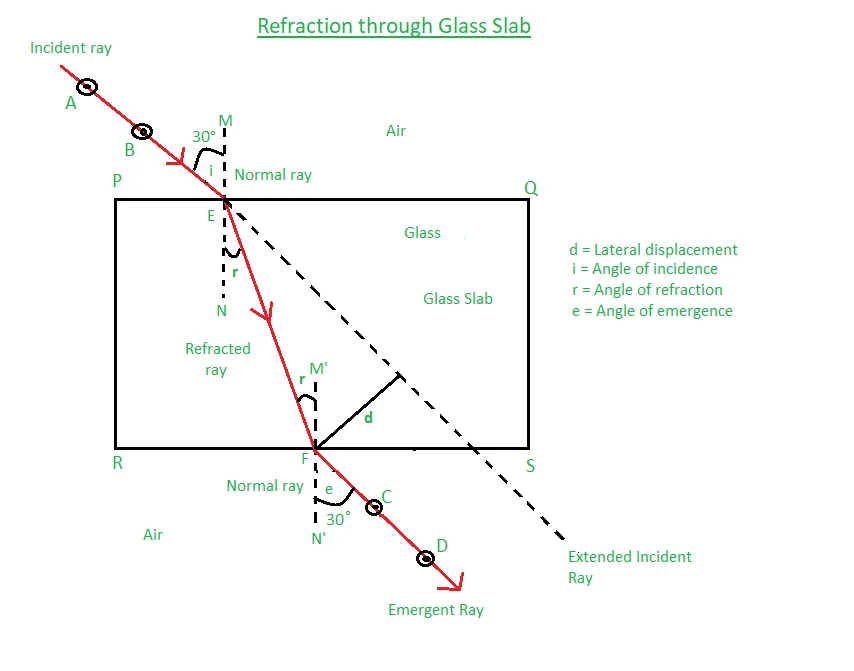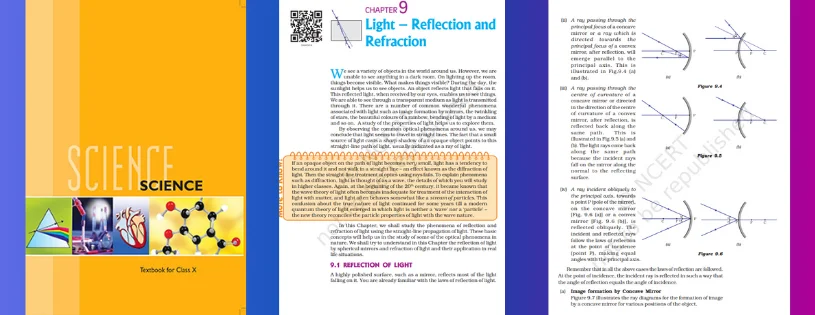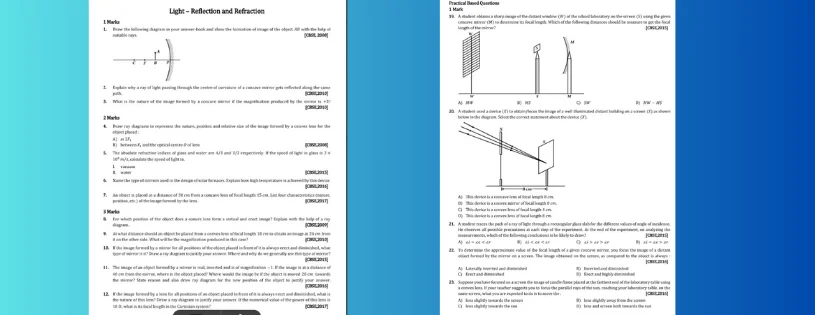Light, the ethereal essence that illuminates our world, weaves a captivating tale through the phenomena of reflection and refraction. In the dance of photons, reflection mirrors the world around us, unveiling symmetrical wonders on polished surfaces and tranquil waters. Meanwhile, refraction bends the path of light, creating prismatic spectacles and shaping the lenses that enhance our vision. Join us on a journey into the enchanting interplay of these phenomena, where the fundamental nature of light unfolds, revealing a dazzling tapestry of physics, optics, and the everyday magic that surrounds us.
Exploring the Mysteries of Reflection and Refraction
Delving into the captivating realm of light, our exploration focuses on the enchanting interplay of reflection and refraction. Reflection, where light gracefully bounces back, creates symmetrical wonders on mirrors and water surfaces. In contrast, refraction bends the trajectory of light, offering mesmerizing displays of color and shaping the lenses that enhance our vision. As we unravel the mysteries of these phenomena, the dance of photons reveals a tapestry of physics and optics, showcasing the dynamic beauty inherent in the fundamental nature of light. Join us on this journey of illumination, where science meets the sublime in the captivating world of reflection and refraction.
Laws of reflection:
The laws of reflection describe the behavior of light when it encounters a surface and is reflected. Two fundamental principles govern the process:

-
The Incident Ray: The incident ray is the incoming ray of light that strikes the surface. It travels towards the point of incidence, which is where the ray meets the reflecting surface.
-
The Reflected Ray: The reflected ray is the light that bounces off the surface and travels away from the point of incidence. The angle between the incident ray and the normal (a line perpendicular to the surface at the point of incidence) is equal to the angle between the reflected ray and the normal. This relationship is expressed in the law of reflection.
In mathematical terms, the law of reflection can be stated as follows: "The angle of incidence is equal to the angle of reflection." This law holds for smooth surfaces, such as mirrors, where the reflection is specular and follows a predictable pattern.
Spherical mirrors:
Spherical mirrors are mirrors that have a curved, spherical shape. There are two primary types of spherical mirrors: concave mirrors and convex mirrors. The shape of these mirrors is defined by a section of a sphere.

-
Concave Mirrors:
- Shape: A concave mirror is curved inward, like the inner surface of a sphere.
- Reflective Surface: The reflecting surface is on the inner side of the curved mirror.
- Focal Point and Focal Length: Concave mirrors have a focal point, where parallel rays of light either converge (real focal point) or appear to converge (virtual focal point). The distance between the mirror's surface and the focal point is the focal length.
Concave mirrors are often used in applications such as makeup mirrors, shaving mirrors, and some types of reflective telescopes.
-
Convex Mirrors:
- Shape: A convex mirror is curved outward, like the outer surface of a sphere.
- Reflective Surface: The reflecting surface is on the outer side of the curved mirror.
- Focal Point and Focal Length: Convex mirrors diverge parallel rays of light and appear to diverge from a point behind the mirror. The point where these rays appear to diverge is the virtual focal point, and the distance between the mirror's surface and this point is the virtual focal length.
Convex mirrors are commonly used in applications such as side mirrors on vehicles and security mirrors in stores, as they provide a wider field of view.
The laws of reflection govern the behavior of spherical mirrors. The angle of incidence is equal to the angle of reflection, and the focal properties of these mirrors are determined by their curvature. The study of spherical mirrors is an essential part of optics and is particularly important in understanding image formation and magnification in optical systems.
Mirror formula and magnification:
The mirror formula and magnification formula are fundamental equations in optics, specifically for spherical mirrors (both concave and convex). These formulas are derived from the geometry of image formation and the laws of reflection.
1. Mirror Formula:
The mirror formula relates the focal length (f), object distance (u), and image distance (v) for a spherical mirror. It is expressed as follows:
𝟏/𝒇 = 𝟏/𝒗 + 𝟏/𝒖
where:
- f is the focal length of the mirror (positive for concave mirrors, negative for convex mirrors).
- v is the image distance (positive for real images, negative for virtual images).
- u is the object distance (positive for objects on the same side as the incident light, negative for objects on the opposite side).
2. Magnification Formula:
The magnification (m) of an image formed by a mirror is given by the following formula:
m=-v/u
where:
- m is the magnification.
- v is the image distance.
- u is the object distance.
The negative sign in the magnification formula indicates that the image formed is inverted compared to the object. If m is positive, the image is upright; if m is negative, the image is inverted.
Refraction Through a Glass Slab and Refractive Index:

Refraction Through a Glass Slab:
Refraction through a glass slab is a phenomenon where light passing through a transparent medium, such as a glass slab, changes direction due to a change in speed. When light enters the glass slab from the air (or another medium), it bends at both the entry and exit surfaces. The bending of light is a consequence of the change in the speed of light as it travels from one medium to another.
Key points:
- Entry and Exit Surfaces: Light undergoes refraction at both the entry and exit surfaces of the glass slab.
- Change in Speed: As light enters the glass, it slows down, and as it exits, it speeds up, causing it to change direction.
- Emergent Ray: The emergent ray is parallel to the incident ray, but the overall path is shifted laterally due to the bending at the entry and exit surfaces.
Refractive Index:
The refractive index (n) of a material is a measure of how much the speed of light is reduced in that material compared to its speed in a vacuum. It is defined by the ratio of the speed of light in a vacuum (c) to the speed of light in the material (v).
Key points:
- Speed of Light in a Vacuum (c): Approximately 3×108 m/s3×108m/s.
- Speed of Light in the Material (v): The speed of light is lower in denser media, leading to a higher refractive index.
- Unitless Quantity: Refractive index is a dimensionless quantity.
The refractive index plays a crucial role in understanding and predicting the behavior of light as it passes through different media. It is fundamental to phenomena such as refraction, total internal reflection, and the formation of images in lenses. The higher the refractive index of a material, the more the light is bent as it enters the material, influencing optical properties in various applications.
Spherical Lens:
A spherical lens, a transparent optical element with curved surfaces, comes in two primary types: convex and concave. Convex lenses converge light rays, focusing them to a point, making them valuable in magnifying glasses and cameras. On the other hand, concave lenses diverge light, spreading it out, and find application in correcting nearsightedness. The lens shape, defined by a section of a sphere, interacts with incident light, exhibiting properties such as focal length and image formation. Utilized in eyeglasses, microscopes, telescopes, and various optical instruments, spherical lenses play a pivotal role in shaping our visual perception of the world.
Power of Lens:
The power of a lens, measured in diopters (D), signifies its ability to converge or diverge light. It is inversely proportional to the focal length, with higher power denoting greater refractive capability. The formula, Power (D) = 1/Focal Length (meters), establishes this relationship. Convex lenses with positive power converge light, aiding those with farsightedness, while concave lenses with negative power diverge light for correcting nearsightedness. The combined power of lenses in eyeglasses is calculated algebraically. In optometry and ophthalmology, understanding lens power is fundamental for prescribing corrective lenses, ensuring optimal vision and addressing various visual impairments.

CBSE Class 10 NCERT Science Topics for a Strong Foundation (NCERT DOWNLOAD)
| CHAPTER NAME | Light – Reflection and Refraction |
| Topic Number | Topics |
| 9.1 | Reflection of Light at Curved Surfaces |
| 9.2 | Curved Mirror |
| 9.3 | Refraction of Light |
CBSE Class 10 Board Exam Sample Paper

[Previous Year Question Solution Maths Download Button]
[Previous Year Question Solution Science Download Button]
| CBSE CLASS 10 Mathematics Chapters |
| Chapter1: Real Numbers |
| Chapter2: Polynomials |
| Chapter3: Pair of Linear Equations in Two Variables |
| Chapter4: Quadratic Equations |
| Chapter5: Arithmetic Progressions |
| Chapter6: Triangles |
| Chapter7: Coordinate Geometry |
| Chapter8: Introduction to Trigonometry |
| Chapter9: Some Applications of Trigonometry |
| Chapter10: Circles |
| Chapter11: Areas Related to Circles |
| Chapter12: Surface Areas and Volumes |
| Chapter13: Statistics |
| Chapter14: Probability |
| CBSE CLASS 10 Science Chapters |
| Chapter1: Chemical Reactions and Equations |
| Chapter2: Acids, Bases and Salts |
| Chapter3: Metals and Non-metals |
| Chapter4: Carbon and its Compounds |
| Chapter5: Life Processes |
| Chapter6: Control and Coordination |
| Chapter7: How do Organisms Reproduce? |
| Chapter8: Heredity |
| Chapter9: Light – Reflection and Refraction |
| Chapter10: The Human Eye and the Colourful World |
| Chapter11: Electricity |
| Chapter12: Magnetic Effects of Electric Current |
| Chapter13: Our Environment |
| Class 8 |
| Class 9 |
| Class 11 |
| Class 12 |
CBSE Class 10th Downloadable Resources:
| 1. CBSE Class 10th Topic Wise Summary | View Page / Download |
| 2. CBSE Class 10th NCERT Books | View Page / Download |
| 3. CBSE Class 10th NCERT Solutions | View Page / Download |
| 4. CBSE Class 10th Exemplar | View Page / Download |
| 5. CBSE Class 10th Previous Year Papers | View Page / Download |
| 6. CBSE Class 10th Sample Papers | View Page / Download |
| 7. CBSE Class 10th Question Bank | View Page / Download |
| 8. CBSE Class 10th Topic Wise Revision Notes | View Page / Download |
| 9. CBSE Class 10th Last Minutes Preparation Resources (LMP) | View Page / Download |
| 10. CBSE Class 10th Best Reference Books | View Page / Download |
| 11. CBSE Class 10th Formula Booklet | View Page / Download |
Being in CBSE class 10th and considering the board examinations you must be needing resources to excel in your examinations. At TestprepKart we take great pride in providing CBSE class 10th all study resources in downloadable form for you to keep you going.
Below is the list of all CBSE class 10th Downloads available on TestprepKart for both Indian and NRI students preparing for CBSE class 10th in UAE, Oman, Qatar, Kuwait & Bahrain.
FAQ
Q1.How does refraction differ from reflection?
Answer. Refraction involves the bending of light as it passes from one medium to another, while reflection is the bouncing back of light from a surface.
Q2. How do lenses use refraction, and what are their applications?
Answer. Lenses use refraction to converge or diverge light. Convex lenses converge light for magnification (e.g., in cameras), while concave lenses diverge light for correction (e.g., in eyeglasses).
Q3. How does a glass slab demonstrate refraction?
Answer. A glass slab demonstrates refraction as light passes through, bending at both entry and exit surfaces. The lateral shift in the emergent ray illustrates the refraction phenomenon.
Q4. What is the refractive index, and how does it influence light behavior?
Answer. The refractive index is a measure of how much a medium slows down light. It affects the bending of light during refraction and is crucial in understanding optical properties.
Q5. How do concave and convex mirrors differ in terms of reflection?
Answer. Concave mirrors converge light to a focal point, forming real or virtual images. Convex mirrors diverge light, producing virtual, diminished images with a wider field of view.
Leave a Reply